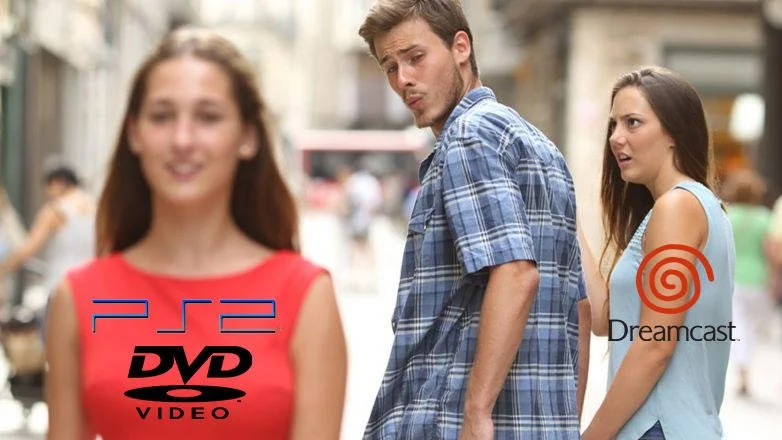In the year 2000, Sony's PlayStation 2 and Sega's Dreamcast were two of the most talked-about video game consoles on the market. Both were highly anticipated and boasted impressive hardware and graphics capabilities, but it was the PlayStation 2 that ultimately won the console wars, outselling the Dreamcast by a significant margin.
with the benefit of hindsight, choosing the PS2 over Dreamcast was actually a big mistake. Here’s why.
Lack of innovation: While the PS2 was a solid console in its own right, it didn't really offer anything new or innovative compared to its predecessor, the original PlayStation. In contrast, the Dreamcast was packed with features that were ahead of their time, such as online gaming and the ability to connect to the internet.
Limited game library: While the PS2 did eventually amass a massive library of games, it took a while for developers to fully take advantage of its hardware capabilities. In contrast, the Dreamcast had a strong launch lineup, with many innovative and unique titles that were never released on any other platform.
Overheating issues: The PS2 was notorious for its overheating issues, which could cause the console to freeze or even permanently damage the hardware. In contrast, the Dreamcast was a more reliable console with less hardware issues.
Controller design: The PS2's DualShock controller was a solid design, but it wasn't very different from the original PlayStation's controller. In contrast, the Dreamcast's controller was innovative and unique, with a built-in screen and memory card that could be used as a portable gaming device.
Graphics capabilities: While the PS2's graphics were impressive for the time, they weren't as advanced as the Dreamcast's. The Dreamcast was the first console to support high-resolution graphics and anti-aliasing, which made games look much smoother and more detailed.
Online gaming: The Dreamcast was the first console to offer online gaming out of the box, and it had a robust selection of online-enabled games that allowed players to compete against each other from across the world. The PS2, in contrast, required an additional adapter to enable online play.
Peripheral support: The Dreamcast had a wide variety of peripherals available, including a keyboard, a mouse, and even a fishing rod controller for fishing games. In contrast, the PS2's peripheral support was more limited.
Sega's support: While Sony had a massive marketing budget and a huge developer ecosystem, Sega was known for its strong support of its consoles and its commitment to creating unique and innovative games. This meant that the Dreamcast had a steady stream of high-quality exclusive titles that couldn't be found on any other console.
Price: The Dreamcast was significantly cheaper than the PS2 at launch, which made it a more attractive option for budget-conscious gamers. This was especially important given the weak launch lineup of the PS2.
Legacy: While the PS2 has gone down in history as one of the most popular consoles of all time, it's worth noting that many of its most popular games were later re-released on other platforms, such as the PS3 and PS4. In contrast, many of the Dreamcast's most unique and innovative games have never been re-released, making it a console with a strong legacy that still holds up today.
In conclusion, while it's easy to see why the PS2 was such a popular console in its day, choosing it over the Dreamcast in the year 2000 was actually a big mistake. The Dreamcast offered a unique and innovative gaming experience that was ahead of its time, and it still has a cult following to this day.


